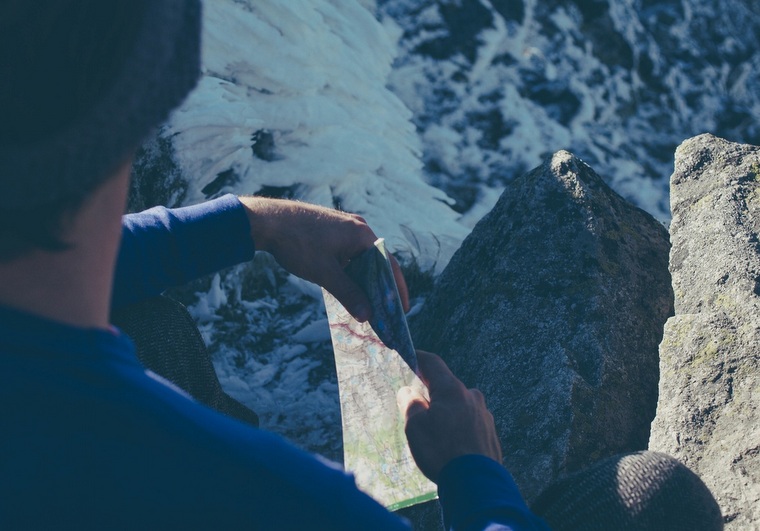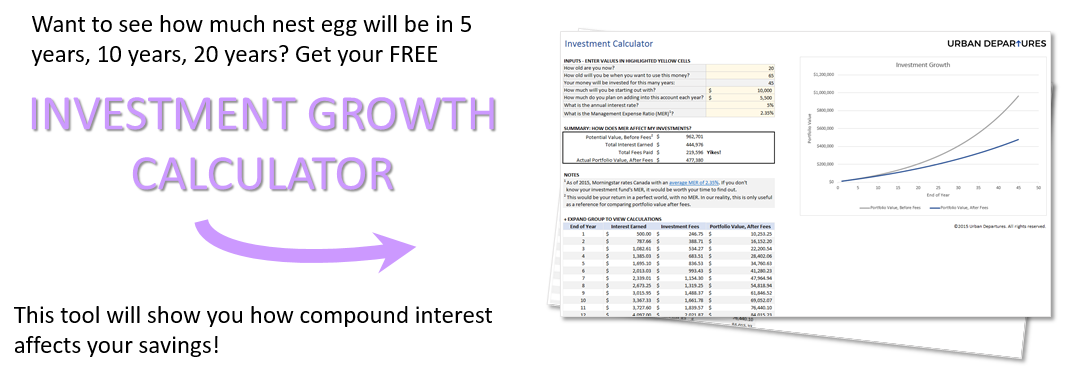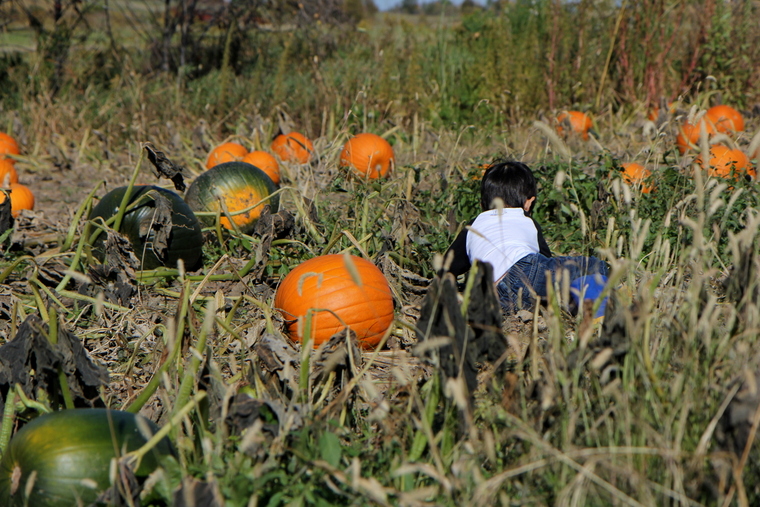With my birthday fast approaching, I thought it’d be fun to check in on the 30 financial milestones to reach by age 30 that have been floating around the internet for a while. How many of these did I manage to check off the list? Read on for my shocking confessions!
1. Financially independent of your parents. That ship sailed a while ago- pretty much right out of school. We worked off $30K in student loans, paid for our wedding and put together a down payment with our own hard earned cash. Emily did live with her parents for almost two years after graduating as we saved up to get hitched. I, on the other hand, had the good fortunes of crashing in a basement apartment of a rooming house. It was cheap ok? Good times all around.
2. Debt free. Technically, the mortgage is debt, so no. That said, credit cards are paid off in full each cycle and there aren’t any other loans to speak of.
3. Out of overdraft. What’s overdraft?
4. Established good credit history. At last check, ye ole credit score was hanging out at 782.
5. Have $25,000+ saved for retirement. Check and then some.
6. Started an investment portfolio. We started investing with TD e-Series index funds shortly after the birth of Big Brother. It’s great knowing that my portfolio will continue to grow over the long term without having to keep an eye on the market.
We don’t have an emergency fund.
7. Established an emergency fund. Yes, we did have a traditional emergency fund but we now take a little bit more of an unconventional approach. We’re comfortable with our habits and our financial health so we have our emergency savings invested in the TFSA.
8. Properly insured. Health: check (thanks Canada). Life: check. Content and car: check. Disability: hmmm, maybe we should look into that?
9. Maximizing employer benefits. We participate in our company defined benefit contribution plans where contributing a percentage of our income is matched by our employer. Use it or lose it.
10. In the habit of tracking your spending. I use a combination of spreadsheets and You Need a Budget a.k.a. YNAB (referral link) to track our spending and net worth.
11. Done with impulse purchases. Apparently, I’m a robot and have no impulses. Just ask Emily.
12. Willing to spend where it counts. Korea, Brazil, or that time we took off to tour Asia. I’ve been called all sorts of crazy for not paying for mobile phone data, but it’s tradeoffs like these that enable our jet setting ways.
13. In the habit of regularly checking your credit report. Once a year. Like clockwork.
14. On top or ahead of all your monthly bills. Paid in full. Also like clockwork.
We use credit cards for almost everything.
15. At least one big splurge you saved up for and paid in full with cash. Wedding, car and travel aside- Laser. Eye. Surgery. Best $4,500 I ever spent. I diligently saved my monthly allowance and sold off a bunch of my prized possessions (ciao, xbox) to pay for it. I did not, however, pay for it in cash; you don’t get travel reward points for that, silly. I paid with a credit card and cleared the balance at the end of the month.
16. An understanding of personal income taxes and how to minimize what you pay. UFile is my friend. Maxback does all the work for me. Ok, admittedly, I could do better.
17. Diligently saving for a big purchase. See #12. or #15.
18. A clear direction of your career. I’m still sorting out what I want to do when I grow up. Astronaut, rock star or pro football (soccer to you, weirdos) player.
19. A profitable side income. TBD. Side hustles abound. Whether they’re profitable is another story.
20. A positive, growing net worth. We kids are alright.
21. A BHAG for your finances. Big Hairy Audacious Goal? Where do I start? Raise $10K to build a health clinic in Nigeria. Save 50% of our income. That’s a bit of a stretch, because daycare, but give it a few years and maybe we’ll hit it. Got your binoculars? You’re looking at some form of entrepreneurship with what looks like location independence off in the distance.
22. An understanding and a plan of how your money will deliver the lifestyle you want. We’ve carefully considered the trade offs we’re willing to make to live the lifestyle we want. Living in a smaller space helps us avoid being house rich and cash poor. It’s not without its perks: Chatime is just around the corner.
23. So over measuring your finances against that of your friends. I find it helpful to focus on the things I can change rather than thinking about things that are out of my control.
We’ve never had cable- not even growing up.
24. Less consumption-oriented. One of the lessons we’ve gleaned from our travels is how people can live contently with little. Wealth isn’t defined by material possessions and we’re working to break the curse of excessive consumerism.
25. A healthy relationship with credit cards. Sure, if an addiction to travel rewards is healthy. At the risk of sounding like a broken record, credit cards get paid off every month.
26. A regular contribution to charity. We’re fortunate to lead incredibly blessed lives, and I believe it is on us to be a blessing to those around us. If I’ve learned anything from my 3 year old, it is to give- and give freely. Like the man named Picasso once said “The meaning of life is to find your gift. The purpose of life is to give it away.”
27. If you’re part of a couple, a healthy way of sharing money with your partner. We have combined finances and use a joint bank account- that works for us. No matter the situation, transparency and trust are paramount; we are working towards the same goals, after all.
28. A commitment to putting free or cheap before convenient. We haven’t eaten out in over two months. I don’t mind; Emily is a chef extraordinaire. She, on the other hand, has been known to gaze longingly at pastries through pane glass windows.
29. Done paying unnecessary fees. After years of keeping minimum balances avoid banking fees, I switched to no-fee banking a few years ago and invested the balance. Cable television is also an unnecessary fee. Yeah, that’s right. I said it.
30. An understanding and appreciation for the reality that money is only a tool of exchange, and not worth obsessing over. Learning to put our money on autopilot has really allowed us to take on and tackle the things that we really care about. While it certainly can be helpful, it is not a prerequisite to living a life with purpose in accordance with your values.
My big confession: I’m actually turning 31! To celebrate, I’m throwing in a bonus milestone.
31. Maintain a will. Yeah, we have one. But this is more of a reminder that I still need to add Little Sister to it.
The Last Word
While this is a fun exercise, don’t get caught in the trap of comparing your progress with someone else’s. Every person’s situation is different and the milestones within reach will depend on your specific set of circumstances. Maybe you just finished grad school or are experiencing sleepless nights with a newborn- some of these milestones will come easier than others. As you work towards achieving some of these goals, keep this in mind:
“The secret of getting ahead is getting started. The secret of getting started is breaking your complex overwhelming tasks into small manageable tasks, and starting on the first one.”
-Mark Twain
This collection of 30 financial milestones to reach by 30 is by no means a definitive list. Break down the milestones into manageable steps and get started. Before long, you’ll be checking them off your list.
Which milestones do you feel are the best place to start?






